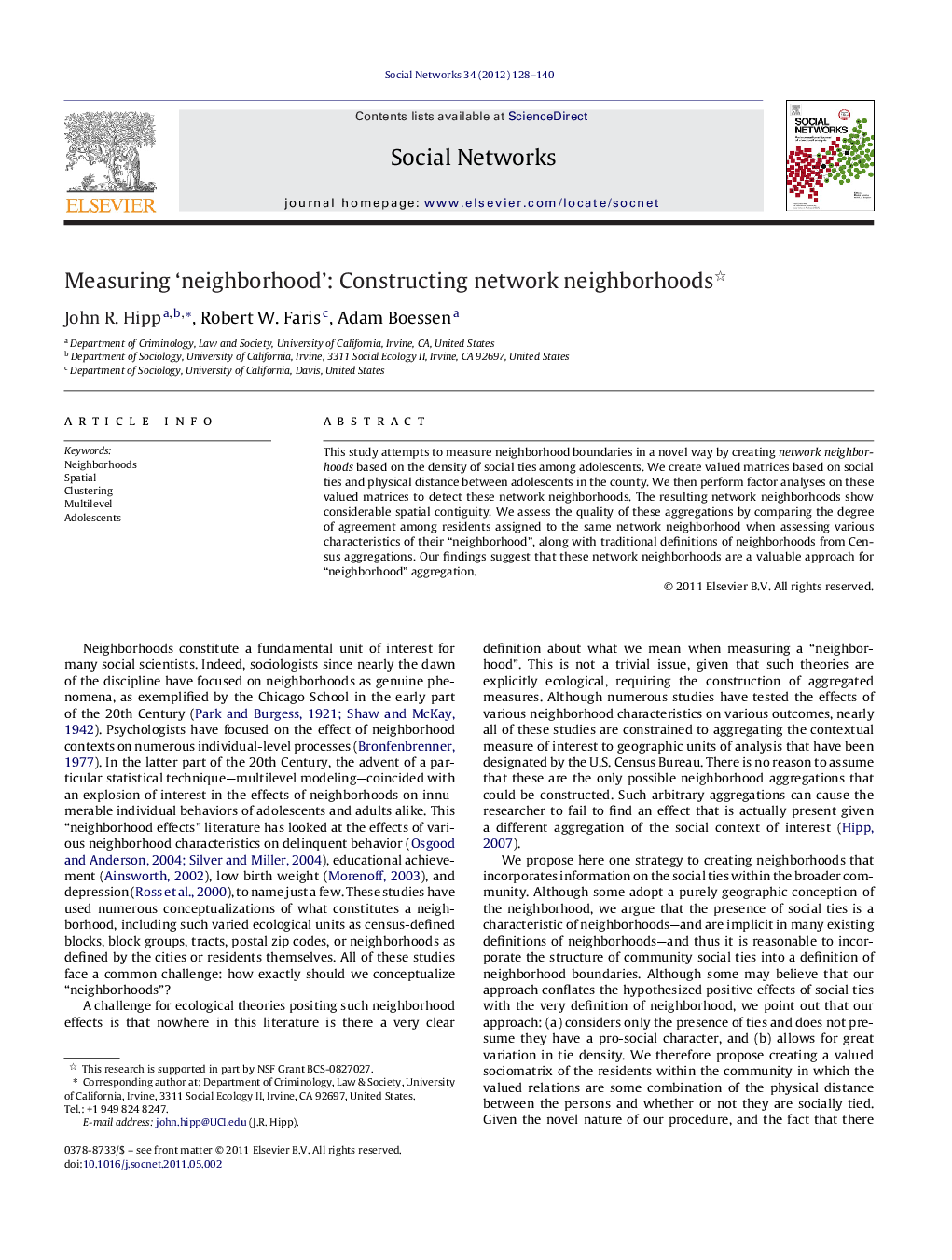| Article ID | Journal | Published Year | Pages | File Type |
|---|---|---|---|---|
| 1129295 | Social Networks | 2012 | 13 Pages |
This study attempts to measure neighborhood boundaries in a novel way by creating network neighborhoods based on the density of social ties among adolescents. We create valued matrices based on social ties and physical distance between adolescents in the county. We then perform factor analyses on these valued matrices to detect these network neighborhoods. The resulting network neighborhoods show considerable spatial contiguity. We assess the quality of these aggregations by comparing the degree of agreement among residents assigned to the same network neighborhood when assessing various characteristics of their “neighborhood”, along with traditional definitions of neighborhoods from Census aggregations. Our findings suggest that these network neighborhoods are a valuable approach for “neighborhood” aggregation.
► We propose creating neighborhood boundaries based on the density of social ties. ► We provide an example using the social ties among adolescents. ► The network matrix contains information on social ties as well as physical distance. ► We test different weighting schemes for social and physical distance. ► We compare the resulting “neighborhoods” to those using Census boundaries.
